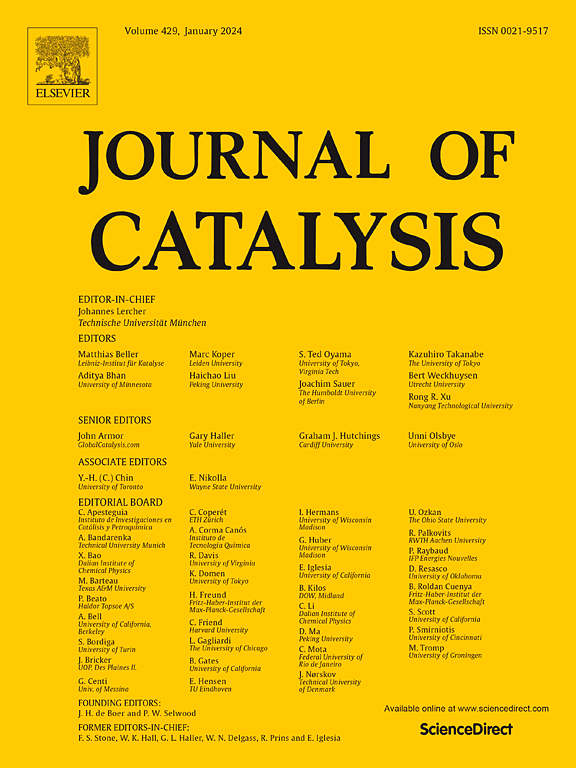Advancing electrocatalyst discovery through the lens of data science: State of the art and perspectives
IF 6.5
1区 化学
Q2 CHEMISTRY, PHYSICAL
引用次数: 0
Abstract
The integration of data science into electrocatalysis has revolutionized the discovery of high-performance catalysts for sustainable energy applications. To emphasize the role of data science and guide future research in electrocatalyst design, this mini-review traces the evolution from low-dimensional data science—rooted in density functional theory (DFT) descriptors such as d-band center and binding/adsorption energies—to high-dimensional analytics powered by large-scale computational datasets and machine learning (ML). First, DFT-derived parameters establish predictive volcano models for various electrochemical reactions, linking atomic-scale descriptors to macroscopic performance within the framework of low-dimensional data science. Meanwhile, with the development of large-scale datasets, ML deciphers complex structure–property relationships, accelerating the design of promising electrocatalysts. Additionally, machine learning potentials (MLPs) bridge quantum precision and scalability, not only accelerating thermodynamic adsorption energy calculations but also enabling simulations of dynamic catalytic mechanisms more efficiently. Finally, we discuss emerging opportunities to deepen data science’s impact. This mini-review highlights the transformative role of data science in bridging theoretical insights, computational efficiency, and experimental validation, ultimately accelerating the design of next-generation electrocatalysts for a sustainable energy future.


通过数据科学的镜头推进电催化剂的发现:艺术和观点的状态☆
数据科学与电催化的整合已经彻底改变了可持续能源应用的高性能催化剂的发现。为了强调数据科学的作用并指导未来电催化剂设计的研究,本文回顾了从低维数据科学(基于密度泛函理论(DFT)描述符,如d波段中心和结合/吸附能)到大规模计算数据集和机器学习(ML)支持的高维分析)的演变。首先,dft衍生的参数建立了各种电化学反应的预测火山模型,将原子尺度描述符与低维数据科学框架内的宏观性能联系起来。同时,随着大规模数据集的发展,机器学习破译复杂的结构-性质关系,加速了有前途的电催化剂的设计。此外,机器学习潜力(mlp)在量子精度和可扩展性之间架起了桥梁,不仅加速了热力学吸附能的计算,而且更有效地实现了动态催化机制的模拟。最后,我们讨论了深化数据科学影响的新机会。这篇小型综述强调了数据科学在连接理论见解、计算效率和实验验证方面的变革作用,最终加速了下一代电催化剂的设计,以实现可持续能源的未来。
本文章由计算机程序翻译,如有差异,请以英文原文为准。
求助全文
约1分钟内获得全文
求助全文
来源期刊

Journal of Catalysis
工程技术-工程:化工
CiteScore
12.30
自引率
5.50%
发文量
447
审稿时长
31 days
期刊介绍:
The Journal of Catalysis publishes scholarly articles on both heterogeneous and homogeneous catalysis, covering a wide range of chemical transformations. These include various types of catalysis, such as those mediated by photons, plasmons, and electrons. The focus of the studies is to understand the relationship between catalytic function and the underlying chemical properties of surfaces and metal complexes.
The articles in the journal offer innovative concepts and explore the synthesis and kinetics of inorganic solids and homogeneous complexes. Furthermore, they discuss spectroscopic techniques for characterizing catalysts, investigate the interaction of probes and reacting species with catalysts, and employ theoretical methods.
The research presented in the journal should have direct relevance to the field of catalytic processes, addressing either fundamental aspects or applications of catalysis.
 求助内容:
求助内容: 应助结果提醒方式:
应助结果提醒方式:


